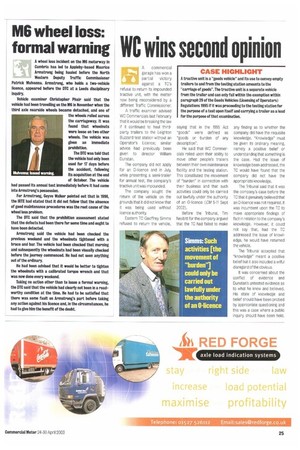Cumbria has led to Appleby-based Maurice Armstrong being hauled before
Page 25

If you've noticed an error in this article please click here to report it so we can fix it.
the North Western Deputy Traffic Commissioner Patrick Mulvenna. Armstrong, who holds a two-vehicle licence, appeared before the DTG at a Leeds disciplinary Inquiry.
Vehicle examiner Christopher Phair said that the vehicle had been travelling on the M6 in November when the third axle nearside wheels became detached, and one of the wheels roiled across the carriageway. It was found that wheelnuts were loose on two other wheels. The vehicle was given an immediate prohibition.
The DTC was told that the vehicle had only been used for 17 days before the accident, following Its acquisition at the end of October. The vehicle had passed Its annual test immediately before It had come into Armstrong's possession.
For Armstrong, Geyve Walker pointed out that in 1998, the IRTE had stated that it did not follow that the absence of good maintenance procedures was the root cause of the wheel loss problem.
The DTC said that the prohibition assessment stated that the defects had been there for some time and ought to have been detected.
Armstrong said the vehicle had been checked the previous weekend and the wheelnuts tightened wfth a brace and bar. The vehicle had been checked that morning and subsequently the wheelnuts had been visually checked before the journey commenced. He had not seen anything out of the ordinary.
He had been advised that it would be better to tighten the wheelnuts with a calibrated torque wrench and that was now done every weekend.
Taking no action other than to issue a formal warning, the DTC said that the vehicle had clearly not been in a roadworthy condition at the time. He had to be satisfied that there was some fault on Armstrong's part before taking any action against his licence and, in the circumstances, he had to give him the benefit of the doubt.
































































































































































